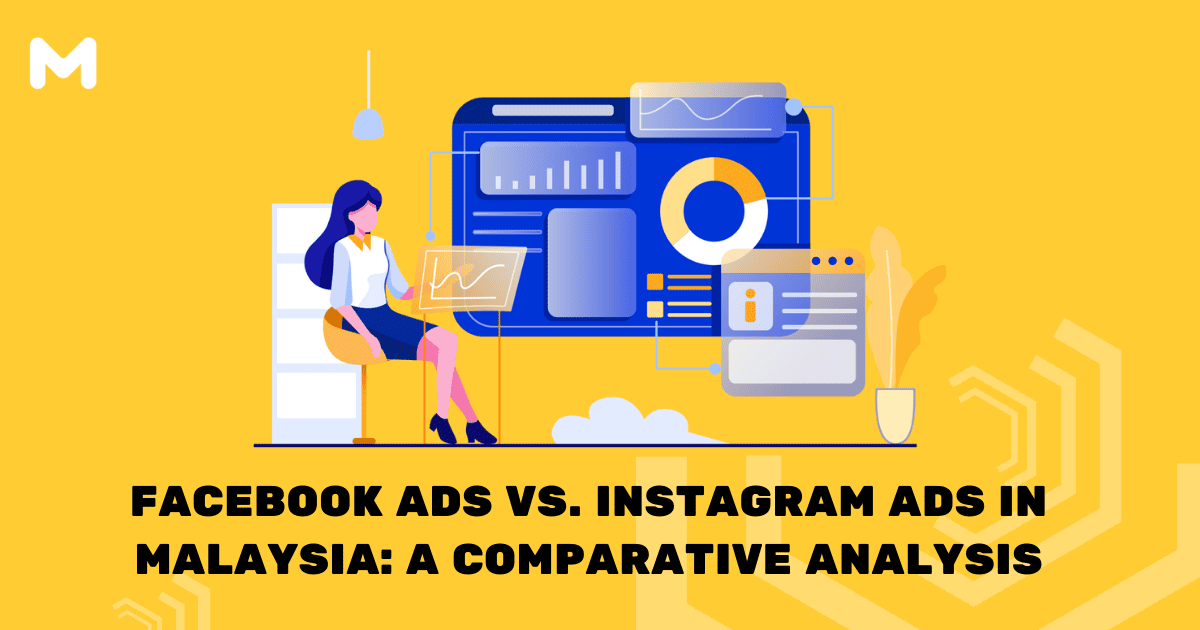Malaysia, with its burgeoning digital economy, has become a hotspot for online advertising. Two of the major contenders in this arena are Facebook and Instagram. Both platforms fall under the umbrella of Facebook Inc. but offer distinct advantages and disadvantages when it comes to reaching Malaysian consumers. Here, we will dissect the strengths and weaknesses of each platform to assist businesses in Malaysia to make informed decisions.
Facebook Ads in Malaysia
Strengths:
- Vast User Base: Facebook boasts a larger number of active users in Malaysia compared to Instagram. This makes it a fertile ground for businesses targeting a wide age range.
- Granular Targeting: Facebook’s advanced targeting options allow advertisers to pinpoint their audience based on location, demographics, interests, behaviours, and more. This is especially helpful for local businesses or niche markets in Malaysia.
- Variety of Ad Formats: From carousel ads to instant experiences, Facebook offers a plethora of formats to engage users. This variety ensures that advertisers can find a format that aligns perfectly with their message.
- Comprehensive Analytics: Facebook’s Ads Manager offers detailed analytics, enabling businesses to track ROI and adjust campaigns in real time based on performance metrics.
Weaknesses:
- Over-saturation: As more businesses jump onto the Facebook ad bandwagon, there’s a risk of ad fatigue among users, leading to diminishing returns.
- Younger Demographic Shift: Younger Malaysians are progressively leaning towards platforms like Instagram or TikTok, potentially reducing the reach of Facebook ads for this demographic.
Instagram Ads in Malaysia
Strengths:
- Younger Audience: Instagram reigns supreme when targeting younger demographics, making it ideal for brands aiming at the under-30 Malaysian market.
- Visual Engagement: Instagram, being an image-centric platform, offers a more immersive visual experience. This is beneficial for brands that rely on aesthetics, such as fashion, food, or travel.
- Story Ads: Instagram Stories, with its ephemeral nature, encourages spontaneous decisions. Ads integrated within stories can be highly effective for time-sensitive promotions or flash sales.
- High Engagement Rates: On average, brands often witness higher engagement rates on Instagram compared to Facebook, making it ideal for campaigns that aim to build community or spark conversations.
Weaknesses:
- Limited User Demographics: While Instagram is great for younger audiences, it might not be the best choice for businesses targeting an older demographic in Malaysia.
- Cost: Due to its high engagement rates and demand, advertising on Instagram might be costlier than Facebook on a per-impression basis.
- Less Text: Instagram’s emphasis is on visuals, limiting the amount of text you can use. For brands that rely on informative content or detailed messaging, this could be a drawback.
Which is Better for Malaysian Businesses?
The answer, unsurprisingly, is “it depends.”
- Demographics: If your primary audience skews younger, Instagram should be your go-to. Conversely, if you’re targeting a broader age range or older demographics, Facebook’s extensive reach in Malaysia might serve you better.
- Budget: If you’re working with a limited budget, Facebook might offer better value for money due to its larger user base and potentially lower cost per impression. However, if engagement is what you’re after and you have the budget to support it, Instagram could yield better results.
- Content: Brands that rely on visual appeal, like fashion labels, restaurants, or travel agencies, might find more success on Instagram. However, if your message requires a deeper dive or more textual content, Facebook’s variety of ad formats could be more beneficial.
In conclusion, while both Facebook and Instagram offer unique strengths and weaknesses, the best platform for advertising in Malaysia largely depends on your specific business objectives, target audience, and content strategy. The key lies in understanding these nuances and crafting a strategy that leverages the best of both worlds. By tailoring your approach to the distinct features and user behaviors on each platform, businesses can create more meaningful connections with their audiences. For instance, if your goal is to engage younger, visually-driven users, you might focus on ways to maximize your Instagram ads strategy through compelling visuals and Stories. Ultimately, a well-rounded approach that combines insights from both platforms can help you achieve sustained success in Malaysia’s competitive digital landscape.
